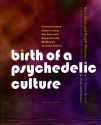The stories and relationships in which Rasmussen seems to be most invested, and which he teases out in the greatest detail, concern the subtle (and not so subtle) ways that speed itself seemed to direct the evolution of culture in the United States—the culture of the American medical community, if nothing else. For a well crafted history and critique of the ongoing evolution of that “speed” with which we are plunging forward, and the chemicals that fuel and are fueled by it, we have Rasmussen to thank for his educational, entertaining, and ultimately troubling book. [ read more ]
With Speed-Speed-Speedfreak: A Fast History of Amphetamine (I’m not sure of the title’s significance; is that like ‘Duck, Duck, Goose’?), he delivers a terrific book on just about every aspect of the notorious substances, amphetamine and methamphetamine. He has some good sections on meth’s manufacture, its relationship to MDMA, and its function and dysfunction in the world of sex. Additionally, the book is full of personal anecdotes from Farren’s career as a British rocker playing in “punk-before-there-was-punk-rock” bands. [ read more ]
Originally published in 2008 under the title Peopled Darkness: Perceptual Transformation through Salvia divinorum, this book is based upon a series of experiences the author had over several years. Arthur is able to bypass the bewildering sensory effects of his initial experiences with an articulate analysis and description of a true “relationship” that he develops with the substance, especially with that of a 5X concentrate. [ read more ]
Much of Sage Spirit: Salvia divinorum and the Entheogenic Experience is comprised of journal-style descriptions and subsequent analyses of the author’s Salvia divinorum journeys, wherein he encounters a realm of other consciousnesses, beings, and intentions. A central element to his ritual is the use of rhythmic, patterned sound. The book concludes with thoughtful guidelines on how to conduct a salvia ceremony for groups or for the individual. [ read more ]
D. M. Turner, late author of The Essential Psychedelic Guide, produced the first slim book on the topic of Salvia divinorum. Thoughtfully and cogently written, Turner takes care to point out potential hazards from using the substance, such as severe-but-temporary disorientation. Although this book was written at the beginning of the salvia renaissance, it remains an excellent general treatment on the subject. [ read more ]
DeKorne, author of the influential Psychedelic Shamanism (1994), has written a masterful follow-up to his observations and insights, especially in regard to a spiritual and self-realizing path. I consider this work essential reading for anyone remotely interested in the metaphysical aspects of psychedelics. It’s also a very useful guide towards a non-dogmatic model of looking at the universe, and, as the book is subtitled, a way to transcend the 2012 myth. [ read more ]
Only 150 pages or so long, with color or black and white glossy illustrations on almost every page, High Society is presented as a visual history of the use of psychoactive substances, but Jay’s narrative transcends this. Such are Jay’s talents in telling this story and in picking what fascinating tidbits to include and what not to, this book would be almost as good without any illustrations whatsoever. [ read more ]
One of the most interesting features of this book is the fact that joining Ram Dass and Metzner—whose conversations with Bravo form the bulk of the text—are a rich assortment of shorter but no less personal statements by a wide selection of surviving individuals who were involved with psychedelics in the 1960s. If Leary, Ram Dass, and Metzner were the “fathers” of the movement, then these other folks were the mothers, foster-parents, midwives, baby-sitters, mischievous aunts and uncles, fellow travelers, and simple eyewitnesses to the growth of the culture that was birthed during that time. [ read more ]
Beyer’s book offers broad discussions more than new data or highly focused arguments; despite some arcane and fascinating discussions of magic stones and sex with plant spirits, I suspect that ethnobotanists and anthropologists familiar with the Amazon will find relatively few surprises. But the ant hills of detail are not the point. Singing to the Plants is designed to inform a wider audience–and gently bust some myths–by presenting this almost literally kaleidoscopic phenomenon through a number of distinct lenses: anthropology, ethnobotany, pharmacology, psychology, international law, cultural politics, and magic both crafty and occult. [ read more ]
A lengthy pamphlet could be written concerning the attitudinizing, the lack of documentation, the bias, the plain errors in these chapters, but it would be unfair to a conscientious public servant trying to deal level-headedly with the grave social problem of narcotics addiction. But psychedelics have nothing to do with narcotics addiction. We can only wonder at Dr. Louria’s orientation when he implies that the threat of general hedonism is a problem in the same category. This book is only of value for a knowledge of the context out of which so many of the future attacks on the use of psychedelics will be taken. [ read more ]











